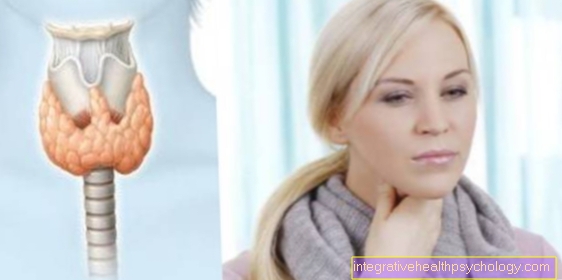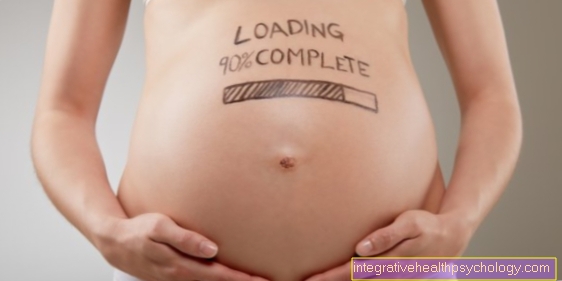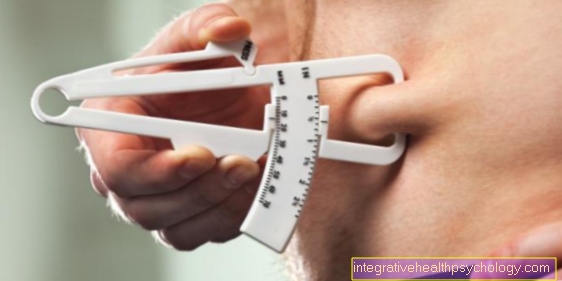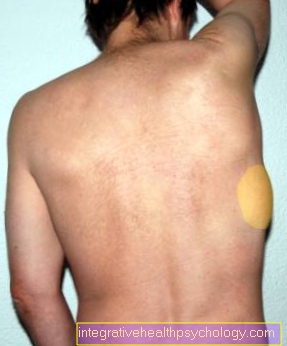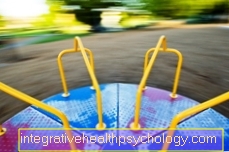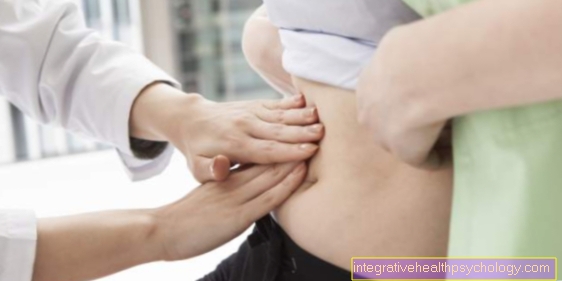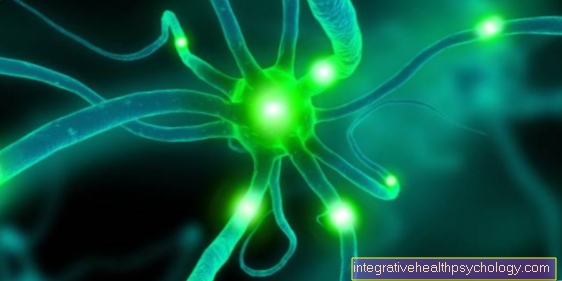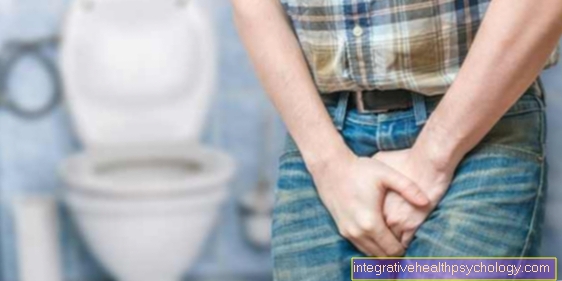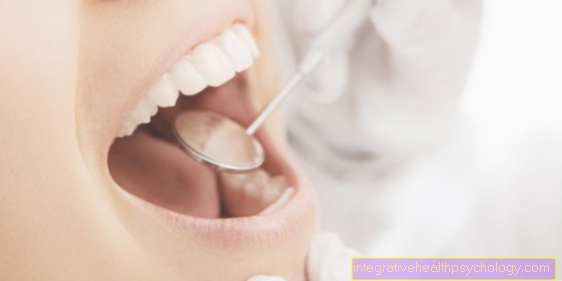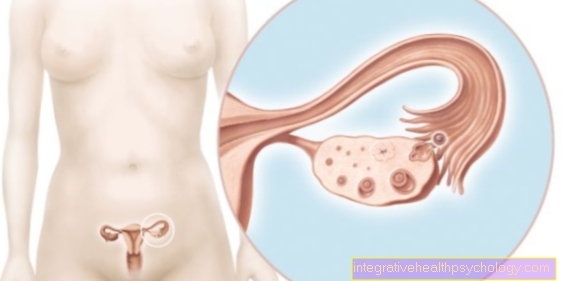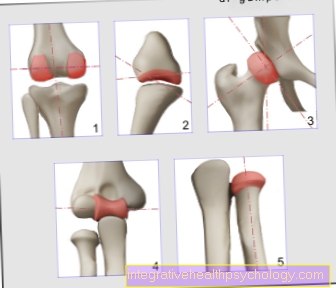bulimia
Synonyms in a broader sense
- Bulimia nervosa
- Anorexia nervosa
- anorexia
- anorexia
- Binge eating disorder
- Psychogenic hyperphagia
definition
The main characteristic of bulimia disorder is recurrent binge eating. During these binge eating, the patient ingests a very large amount of food in a short period of time. This amount is significantly larger than that which a healthy person consumes in a comparable period of time. The binge eating may or may not be accompanied by vomiting.
Epidemiology
Bulimia nervosa (bulimia) is found more frequently in the normal population than anorexia nervosa (anorexia). According to American studies, it can be assumed that the probability of developing bulimia in women (between the ages of 15-30) is around 2%.
The gender distribution roughly corresponds to the distribution in anorexia (women to men = 12: 1).
The probable age of an initial illness is very similar to that of anorexia nervosa (anorexia) (approx. 16-18 years).
Differential diagnoses
Even patients under a Obesity (Overweight) sufferers may experience cravings. However, the subsequent attempts to regulate the weight through various measures are usually missing (see summary of bulimia). Noticeable eating behavior but can also be associated with various physical diseases (Diabetes mellitus, Brain tumors etc.) go hand in hand.
Last but not least, on the therapeutic side, one must also remember that patients with the symptoms of a schizophrenia can also show very noticeable eating behavior.
Comorbidity
- Half of all those suffering from bulimia also have an anxiety disorder
- Depression or mood swings are also found in about 50% of all patients during the course of the disease.
- In about 1/5 of all patients, the diagnostic criteria for alcohol or drug addiction are met.
Summary
Apart from the recurring food cravings with binge eating, the patients usually show a very controlled eating behavior ("restrained eating"). This eating behavior is controlled by the head and not the stomach. Important perceptions such as feelings of hunger and satiety are ignored. The long-term goal of this self-control is to reduce body weight.
Anyway deal at bulimia Sick people to a very high degree with their own body or with its weight, as there is a direct connection between body and self-worth. Since the patients are naturally well aware of their binge eating, this creates a large one fear before the next cravings and the associated weight gain. For this reason, patients take so-called counter-regulating measures that are intended to prevent such weight gain.
So-called self-induced (initiated) vomiting is practiced in approx. 80% of patients. A certain part also engages in repeated laxative abuse. (It should be noted here that this never has the desired effect. The aim is often to prevent nutrient absorption (uptake).
However, only water is withdrawn from the body and this is in most cases not desirable.) Some patients also take drugs to reduce appetite or diuretics (water products).
It becomes particularly dangerous with patients who are at one Diabetes mellitus ("Sugar") suffer, as these often provoke an insufficient supply of insulin in order to slow down the intake of calories (this can be life-threatening !!!).
Symptoms
Common physical complaints / symptoms with Anorexia (Anorexia) and Bulimia nervosa:
- Circulatory disorders with low blood pressure
- Circulatory disorders with cold hands and feet
- Slow pulse (Bradycardia)
- Low body temperature (Hypothermia)
- Gastric dysfunction, bloating and digestive disorders (e.g. constipation = constipation)
- Larynx pain due to vomiting
- gout (Hyperuricemia)
- Water retention in the tissue (Edema)
- Enlarged salivary glands (sialosis)
- heartburn
- depression
- Menstrual irregularities up to amenorrhea (no menstrual bleeding)
- Other hormonal imbalances
- osteoporosis
- Caries
- Dry skin and Hair loss
- Mineral and vitamin deficiencies
Complications
Serious complications Anorexia / Anorexia and Bulimia nervosa:
- Cardiac arrhythmias
- Brain atrophy (shrinkage of brain mass)
- Electrolyte disorders (e.g. hypokalaemia)
- Renal dysfunction
- Nerve damage (Polyneuropathies)
- Ulcers in the stomach or Duodenum
- Anemia (anemia)
- Lanugo hair (downy hair)
diagnosis
The diagnosis can usually be made through medical history and specific questionnaires.
Disorder-specific instruments:
Eating Disorder Inventory (EDI, Garner et al., 1983)
The EDI comprises 8 scales that contain typical psychological characteristics of anorexia and bulimia patients:
- Striving for slimness
- bulimia
- Body discontent
- ineffectiveness
- perfectionism
- interpersonal mistrust
- Interoception and fear of growing up.
The newer version EDI-2 was supplemented by the scales asceticism, impulse regulation and social insecurity.
Questionnaire on eating behavior (FEV, Pudel & Westenhöfer, 1989)
The FEV covers three basic psychol. Dimensions of eating behavior:
- Cognitive control of eating behavior (restrained eating), rigid vs flexible control.
- Disturbance and lability of eating behavior when disinhibited by situational factors
- Hunger feelings and their behavioral correlates
This is based on the concept of "restrained eating" (Herman & Polivy, 1975), which can be a prerequisite for the disturbed eating behavior.
Structured interview for anorectic and bulimic eating disorders (SIAB, Fichter & Quadflieg, 1999)
The SIAB consists of a self-assessment sheet for the patient (SIAB-S) and an interview part for the examiner (SIAB-EX). It contains the diagnostic criteria of ICD-10 and DSM-IV and in addition to the typical anorectic and bulimic symptoms, other relevant symptom areas, such as B. Depression, anxiety and Constraints considered.
therapy
For information on the therapy of bulimia please follow the link: Therapy Bulimia

